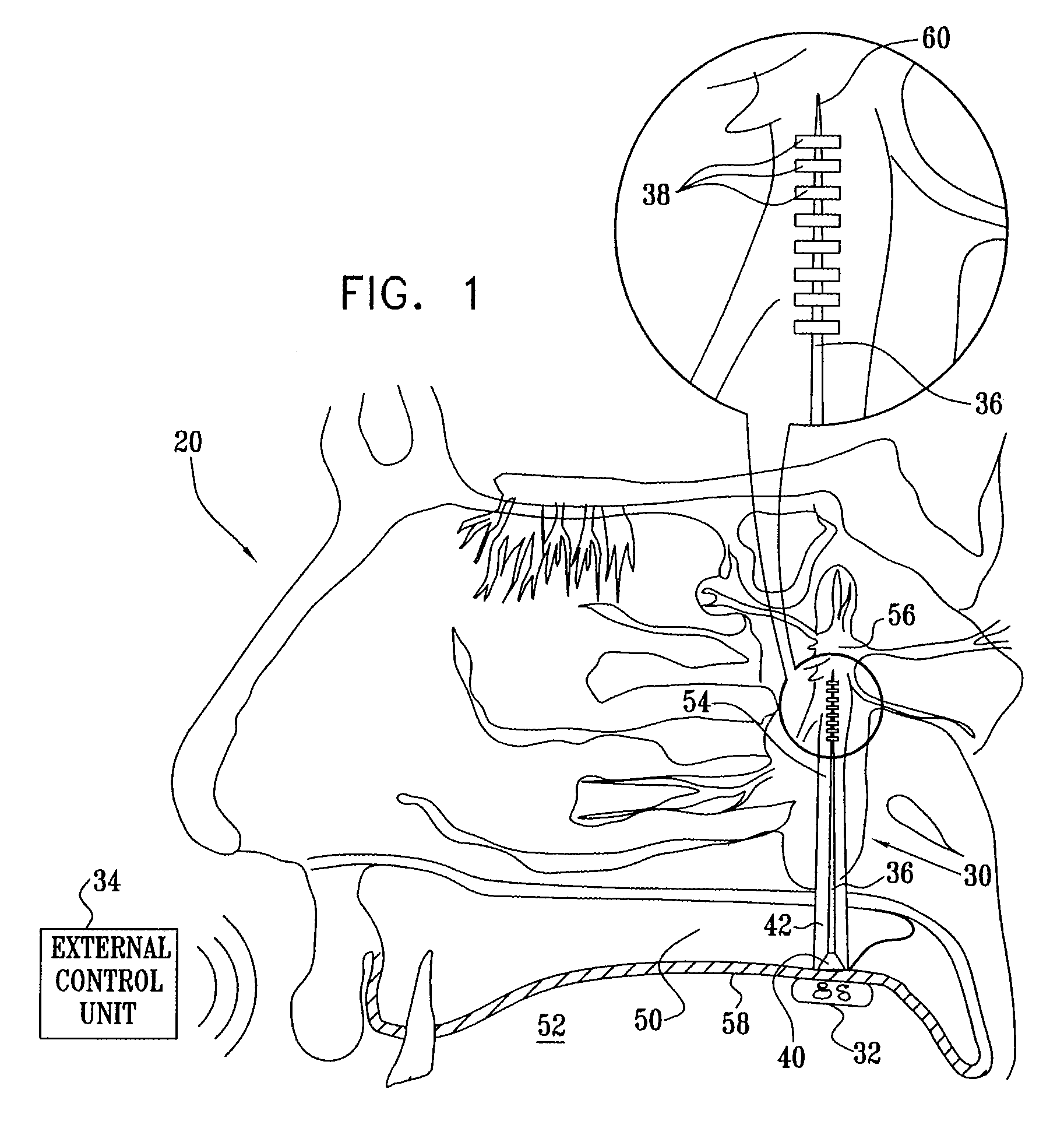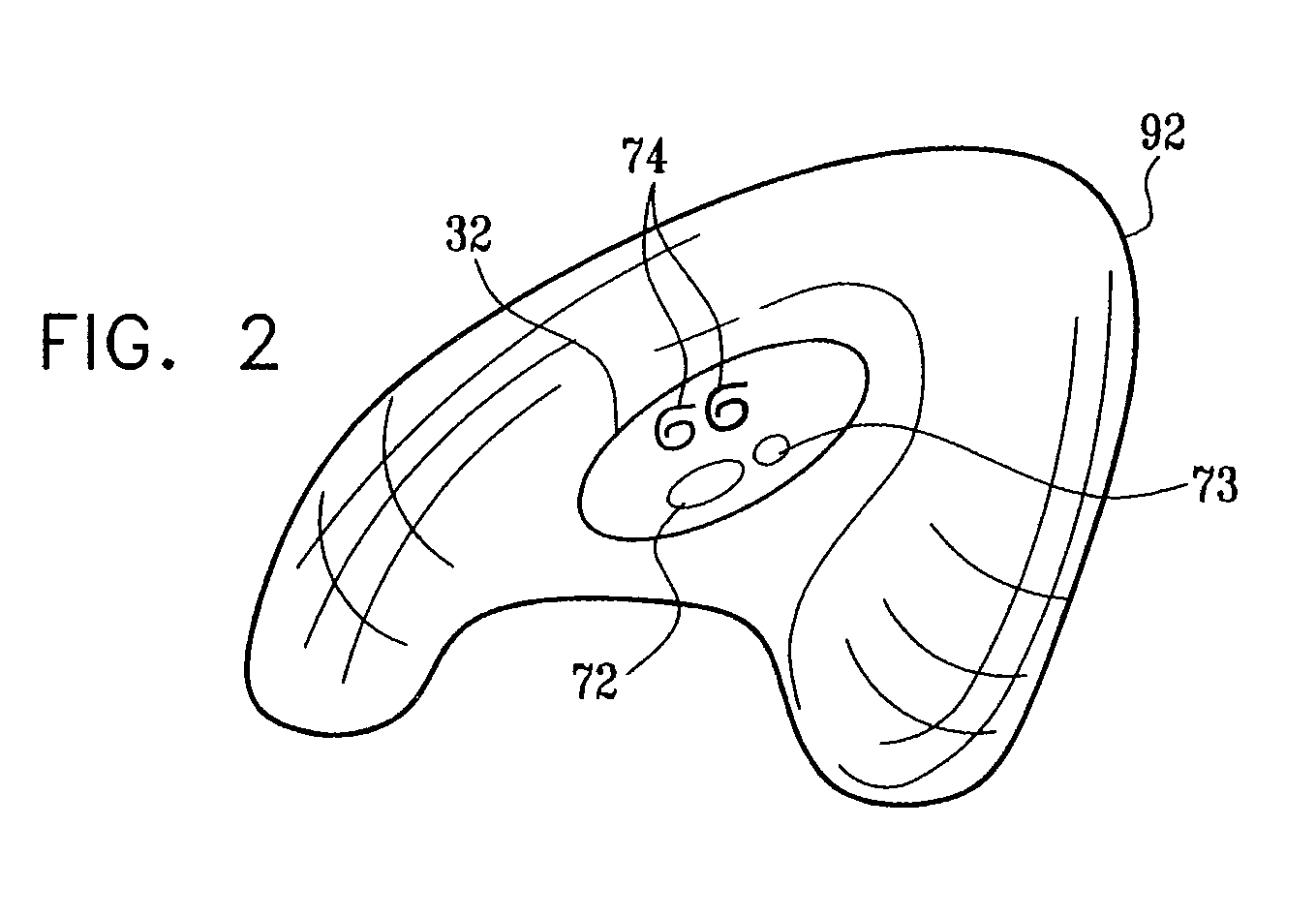Long-term SPG stimulation therapy for prevention of vascular dementia
a long-term, vascular dementia technology, applied in the direction of therapy, internal electrodes, head electrodes, etc., can solve the problems of increasing the cost of care for this growing number of demented patients, the socioeconomic burden on the patient's family and community, and the terminally ill patient to a fully dependent state with profound personal dysfunction, so as to prevent the deterioration of cbf and prevent the onset of dementia. , the effect of low strength
- Summary
- Abstract
- Description
- Claims
- Application Information
AI Technical Summary
Benefits of technology
Problems solved by technology
Method used
Image
Examples
Embodiment Construction
[0178]FIG. 1 is a schematic illustration of a neural stimulation system 20, in accordance with an embodiment of the present invention. System 20 typically comprises an implantable neural stimulator 30, an oral element 32, and an external control unit 34. Stimulator 30 comprises an elongated support element 36, one or more electrodes 38 fixed to the support element in a vicinity of a distal end thereof, and circuitry 40 coupled to the support element in a vicinity of a proximal end thereof. Circuitry 40 typically comprises a wireless coupling element (which typically comprises a coil), and additional elements, such as one or more rectifiers, capacitors, amplifiers, or filters. One or more leads (not shown in FIG. 1), which pass along, through, or around support element 36, couple electrodes 38 to circuitry 40. Alternatively, the leads function as the support element, i.e., the support element does not comprise any structural elements in addition to the leads. Further alternatively, t...
PUM
 Login to View More
Login to View More Abstract
Description
Claims
Application Information
 Login to View More
Login to View More - R&D
- Intellectual Property
- Life Sciences
- Materials
- Tech Scout
- Unparalleled Data Quality
- Higher Quality Content
- 60% Fewer Hallucinations
Browse by: Latest US Patents, China's latest patents, Technical Efficacy Thesaurus, Application Domain, Technology Topic, Popular Technical Reports.
© 2025 PatSnap. All rights reserved.Legal|Privacy policy|Modern Slavery Act Transparency Statement|Sitemap|About US| Contact US: help@patsnap.com



